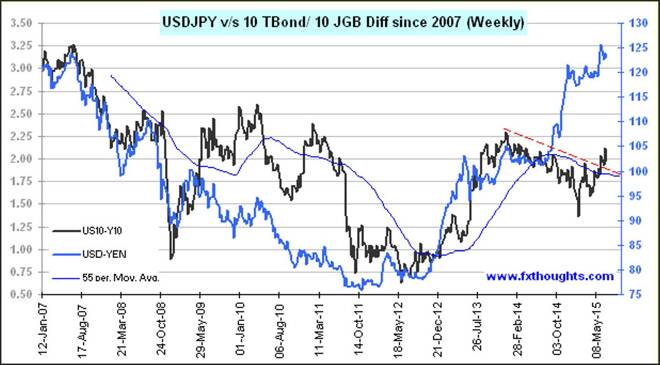Advertisement
Advertisement
How to Use an Interest Rate Differential
By:
Intro
Determining the future direction of a currency pair can be accomplished in a number of ways. Market analysts will use specific types of analysis
Determining the future direction of a currency pair can be accomplished in a number of ways. Market analysts will use specific types of analysis including evaluating capital flows or analyzing price action to create a view of the future direction of an exchange rate. Another analysis that is often contemplated in determining the future direction of a currency pair is using interest rate differentials.
The interest rate differential of an exchange rate is the difference between two similar tenors of debt instruments in two separate countries, such as the 2-year note or the 10-year note. For example, by looking at the chart below you can see that the difference between the 10-year yield on US treasuries and the 10-year yield on the Japanese government bond is 2.1%.
The interest rate differential makes up what is referred to as the forward point. The forward points in turn make up a currency forward rate. The forward points is the interest rate differential for a specific tenor, divided by the exchange rate. This amount is either added or subtracted from the exchange rate to create a rate where traders can purchase or short a currency pair at some time in the future.
For example, if you wanted to sell the USD/JPY 10-year in the future, you would need to pay away to the buyer the difference between the US interest rates and Japanese interest rates. The interest rate differential between the US and Japan would be added to the exchange rate and a seller would then be selling the currency pair at an exchange rate that was approximately 2.10% per year less than the current spot rate to incorporate the interest rate differential.
The higher the interest rate for a country the stronger the demand for holding that currency relative to a country with a smaller interest rate. This is because it costs a trader to hold on to a currency with a relatively lower interest rate. Paying away interest is a strong deterrent to owning a specific currency.
With this in mind, traders can use an interest rate differential of a currency pair to determine the future direction of an exchange rate. If the differential between the USD/JPY is widening in favor of the US dollar than there is a strong likelihood that the currency pair will move in the direction of the interest rate differential. On the other hand, if the interest rate differential is moving lower, then it becomes less expensive to borrow dollars for Yen and therefore the currency pair will probably move lower.
Although no specific individual methodology of determining the direction of a currency pair, using the interest rate differential is one of the best fundamental techniques as it logically helps a trader determine the costs of holding or shorting a currency.
About the Author
David Beckerauthor
David Becker focuses his attention on various consulting and portfolio management activities at Fortuity LLC, where he currently provides oversight for a multimillion-dollar portfolio consisting of commodities, debt, equities, real estate, and more.
Advertisement
